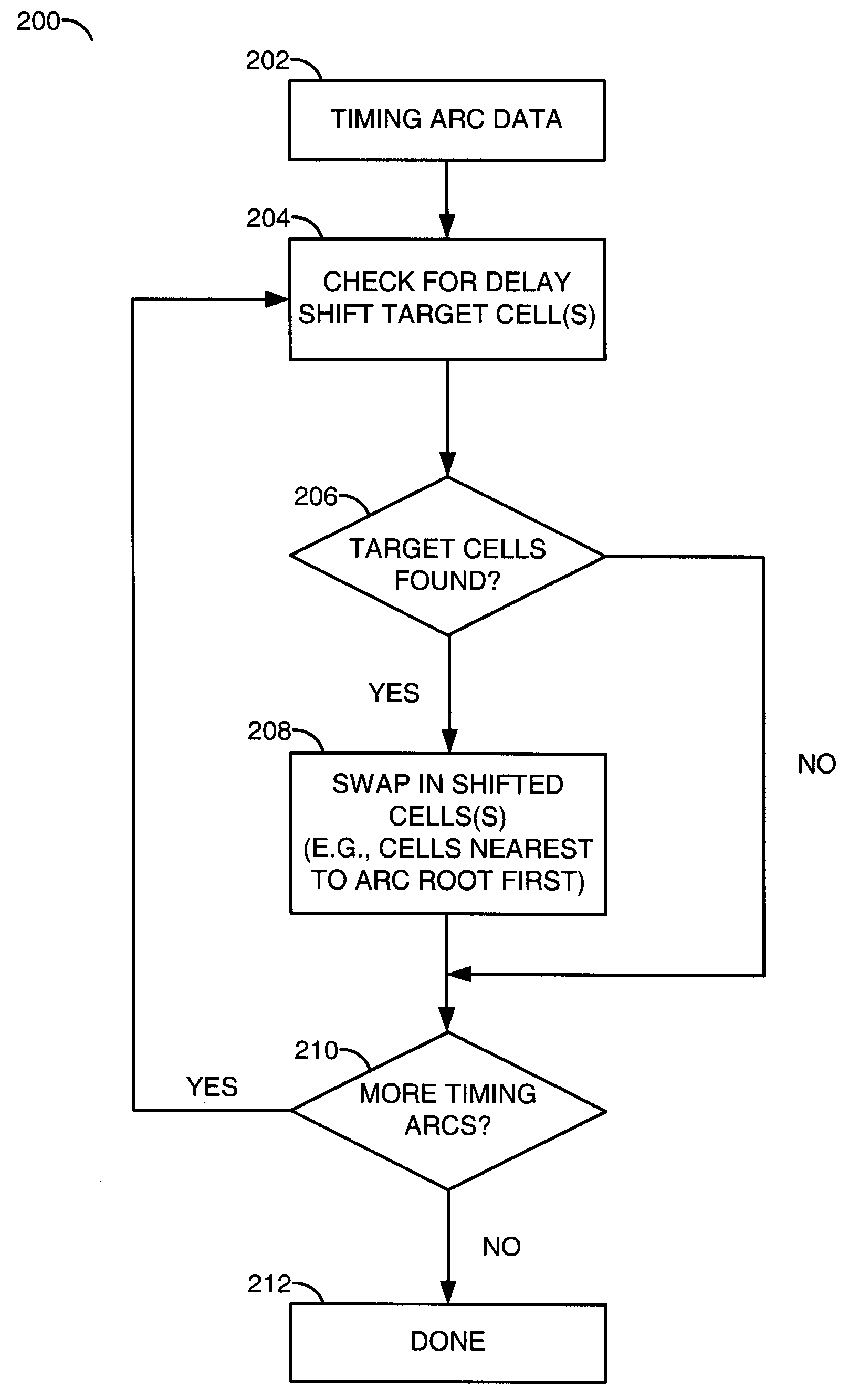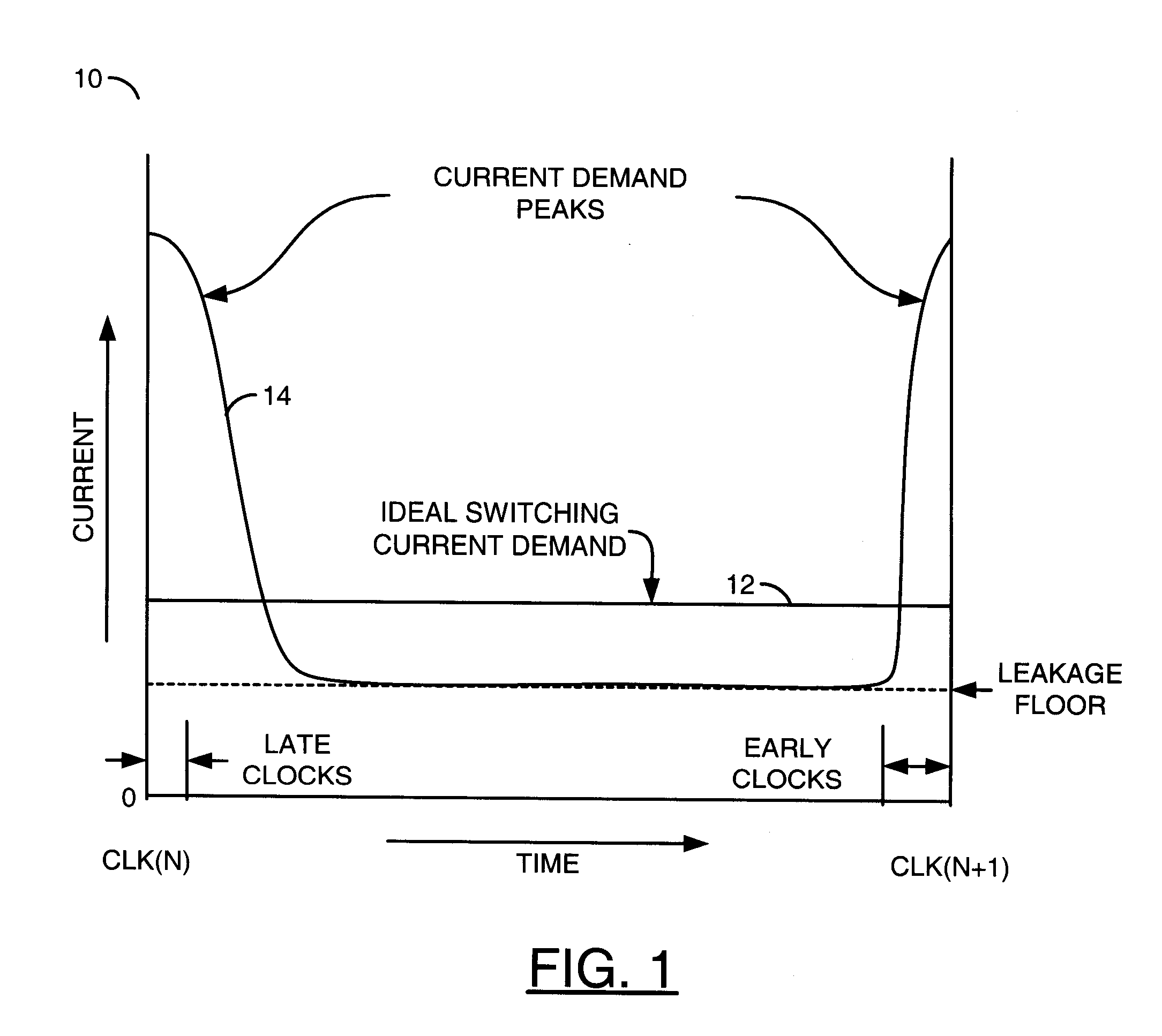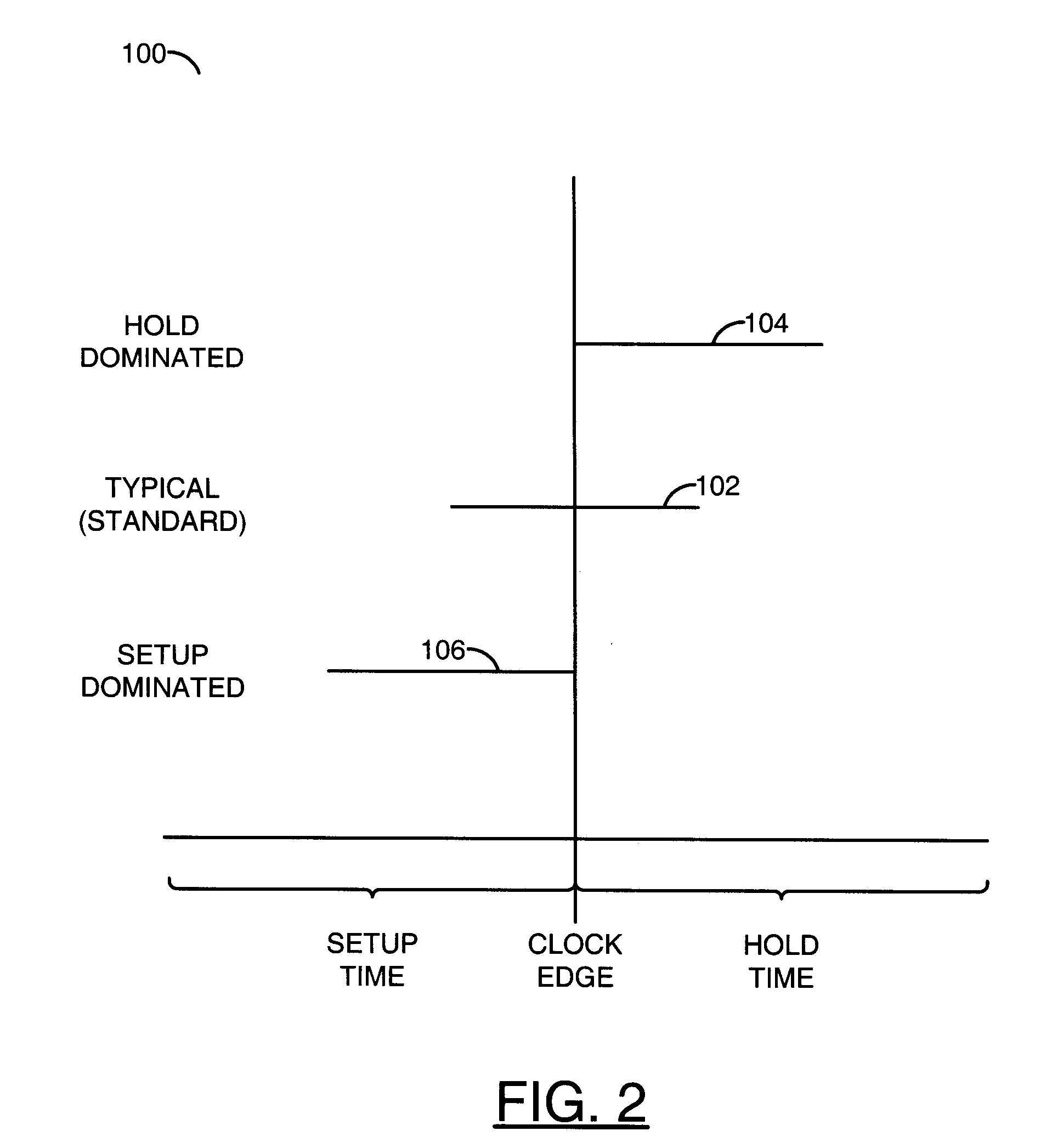Redistribution of current demand and reduction of power and dcap
a current demand and power reduction technology, applied in the field of integrated circuit design, can solve the problems of increasing the difficulty of managing power and power related issues in application specific integrated circuits (asics) and standard silicon products (ssps), and the distribution of current demand is far from ideal, so as to reduce or eliminate the need for dcap
- Summary
- Abstract
- Description
- Claims
- Application Information
AI Technical Summary
Benefits of technology
Problems solved by technology
Method used
Image
Examples
Embodiment Construction
[0017]In one aspect, the present invention generally provides a new type of cell. In one example, the new type of cell may be referred to as a delay shift cell. In some cases new cell designs are implemented. In other cases, a new set of properties may be associated with existing library cells. The properties of the new or modified cells may be used to spread and reduce current spikes. The new or modified cells may be configured to introduce asymmetry with respect to timing arcs of a circuit design. For example, substitution (or swapping) of a base (or standard) cell with a modified (or delay shift) cell may shift a time at which one or more downstream circuits of one or more respective timing arcs may switch. The modified or delay shift cells may retain other key power / performance characteristics such as channel length or voltage threshold (VT) class.
[0018]Referring to FIG. 2, a diagram 100 is shown illustrating adjustment of timing parameters associated with a flip-flop cell imple...
PUM
 Login to View More
Login to View More Abstract
Description
Claims
Application Information
 Login to View More
Login to View More - R&D
- Intellectual Property
- Life Sciences
- Materials
- Tech Scout
- Unparalleled Data Quality
- Higher Quality Content
- 60% Fewer Hallucinations
Browse by: Latest US Patents, China's latest patents, Technical Efficacy Thesaurus, Application Domain, Technology Topic, Popular Technical Reports.
© 2025 PatSnap. All rights reserved.Legal|Privacy policy|Modern Slavery Act Transparency Statement|Sitemap|About US| Contact US: help@patsnap.com



